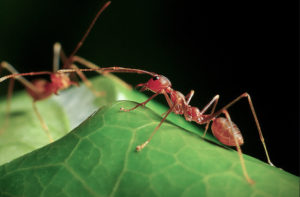“Well, I’m having a good time. Which makes me feel guilty too. How very English.”
-Sir David Attenborough
Have you ever heard of David Attenborough? Perhaps not, since he is often overshadowed by his late brother Lord Richard Attenborough, best known for directing Gandhi (1983) and for his acting role in Jurassic Park. Though not as well known in North America, David is every bit as illustrious a filmmaker as his sibling Richard. Knighted in 1985, Sir David Attenborough has been focused for 70 years on making nature films, transporting viewers to remote places of the earth. This year he celebrated his 90th birthday and, remarkably, is still very busy making films.
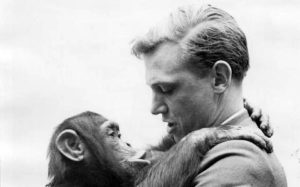 If you’ve never seen the films of David Attenborough, and if you love great nature films as I do, you absolutely must look him up. He is responsible for making such gorgeous BBC series as Life on Earth, Human Planet, The Blue Planet, and Frozen Planet (not to mention the two great anthropological series that he helped develop, Civilization and The Ascent of Man.)
If you’ve never seen the films of David Attenborough, and if you love great nature films as I do, you absolutely must look him up. He is responsible for making such gorgeous BBC series as Life on Earth, Human Planet, The Blue Planet, and Frozen Planet (not to mention the two great anthropological series that he helped develop, Civilization and The Ascent of Man.)
All right, I must confess…this definitely is not an objective review of David Attenborough’s films. It’s more of a glowing tribute to a brilliant and 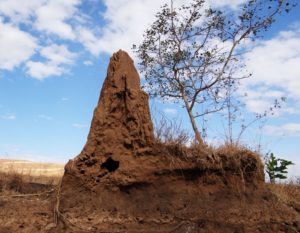 spirited man. He doesn’t claim to be particularly religious; Attenborough calls himself an agnostic but refuses to say with certainty that there is no God. In an interview with British radio host Laurie Taylor, Attenborough describes taking off the top of a termite hill, and seeing hundreds of termites busy clearing the nest, taking care of the queen, caring for the larvae, building walls – but they are all, in fact, blind and don’t have the faintest idea that he is there watching them. Attenborough goes on to muse, with a chuckle, “Perhaps I am like the termites…”
spirited man. He doesn’t claim to be particularly religious; Attenborough calls himself an agnostic but refuses to say with certainty that there is no God. In an interview with British radio host Laurie Taylor, Attenborough describes taking off the top of a termite hill, and seeing hundreds of termites busy clearing the nest, taking care of the queen, caring for the larvae, building walls – but they are all, in fact, blind and don’t have the faintest idea that he is there watching them. Attenborough goes on to muse, with a chuckle, “Perhaps I am like the termites…”
However, Attenborough speaks about the wonders of nature with the passion of an evangelist. He demonstrates and indeed proclaims time and again that he is “in awe” of creation, as he shows us a planet filled with astonishingly diverse forms of life. His films have contributed greatly over the decades to a new attitude toward the environment, as something that is both spectacular and under great threat.
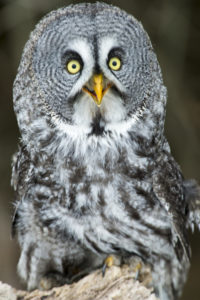 When I think about creation, I am always reminded of locations where he has taken me. Attenborough transports his viewers to remote and otherwise inaccessible places to see strange and wonderful insects, amphibians, fish, reptiles, and mammals (including humans) many of which we would never be able to observe intimately in their natural habitats. Some of the most extraordinary scenes that he shares use very advanced technology. The Life of Mammals (2002) takes us into the night world of nocturnal mammals. It uses low-light and infrared cameras to show us, for example, how big cats behave in the dark. Fascinating stuff.
When I think about creation, I am always reminded of locations where he has taken me. Attenborough transports his viewers to remote and otherwise inaccessible places to see strange and wonderful insects, amphibians, fish, reptiles, and mammals (including humans) many of which we would never be able to observe intimately in their natural habitats. Some of the most extraordinary scenes that he shares use very advanced technology. The Life of Mammals (2002) takes us into the night world of nocturnal mammals. It uses low-light and infrared cameras to show us, for example, how big cats behave in the dark. Fascinating stuff.
When asked which of the segments in all of his films that he is most proud of, Attenborough points out a scene from Planet Earth (2006), which captured something never filmed before. It shows in exquisite detail the rarest of Himalayan animals, a snow leopard, on a frozen mountain cliff cuddling with her cub and then fiercely chasing her prey – a wild goat called a markhor. Less than three minutes long, the scene is both intimate and frightening, and took years to plan and execute. This is one of countless scenes that Attenborough and his camera crew have made mind-boggling efforts to film.
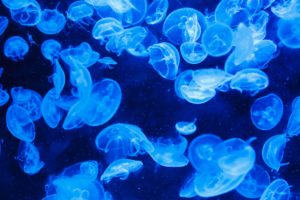 My personal favorite of all of Attenborough’s shows is the series The Blue Planet (2011). Focusing on undersea life, he takes us to the most beautiful and bizarre domains. In one surreal episode we travel down to previously unknown depths, miles below the surface. Here, we witness the most exotic creatures, including transparent squid and jellies, blinking with bioluminescence, and terrifying fish with massive teeth that eat prey twice their size . The series feels like we have been taken to another world to find new life, never seen before.
My personal favorite of all of Attenborough’s shows is the series The Blue Planet (2011). Focusing on undersea life, he takes us to the most beautiful and bizarre domains. In one surreal episode we travel down to previously unknown depths, miles below the surface. Here, we witness the most exotic creatures, including transparent squid and jellies, blinking with bioluminescence, and terrifying fish with massive teeth that eat prey twice their size . The series feels like we have been taken to another world to find new life, never seen before.
Many of his shows have unforgettable scenes, sometimes both fantastic and funny at the same time. In Planet Earth (2006) he takes us to the remote Deer Cave in the Gomantong Cave System, Borneo, South America where five million bats reside. As he stands on a mountainous pile of bat dung and rustling cockroaches, thousands of bats swirl around the gigantic dark cavern. He tells the camera that they somehow navigate in three dimensions with their bat sonar, never hitting anything – until, as he tells us later, one large specimen smashes into his face as soon as the camera is turned off.
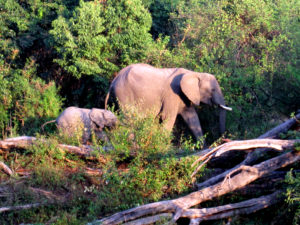 Over the years, his films have become more focused on the plight of our world. State of the Planet (2000) evaluates mankind’s role in affecting natural habitats and the eroding condition of earth. How Many People Can Live on Planet Earth? (2009) focuses on the fact that we have almost tripled in population since 1950 and reminds us of the challenges in continuing to sustain ourselves.
Over the years, his films have become more focused on the plight of our world. State of the Planet (2000) evaluates mankind’s role in affecting natural habitats and the eroding condition of earth. How Many People Can Live on Planet Earth? (2009) focuses on the fact that we have almost tripled in population since 1950 and reminds us of the challenges in continuing to sustain ourselves.
On behalf of creation (and dare I say, the Creator) Attenborough implores us to open our eyes to the beauty around us, and take seriously our stewardship role on this planet.



